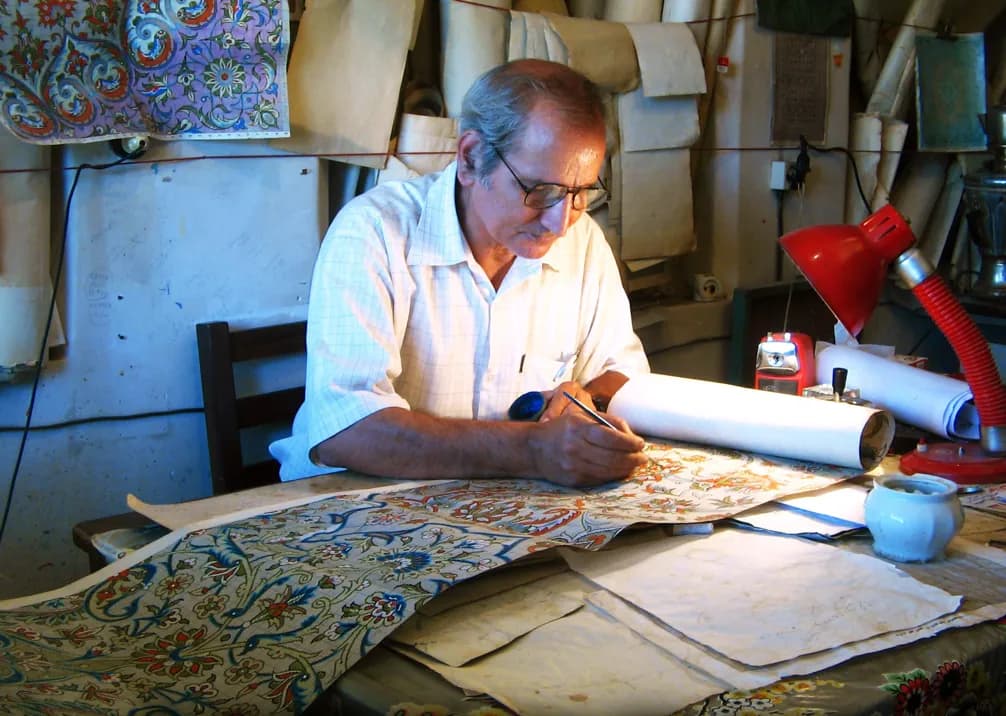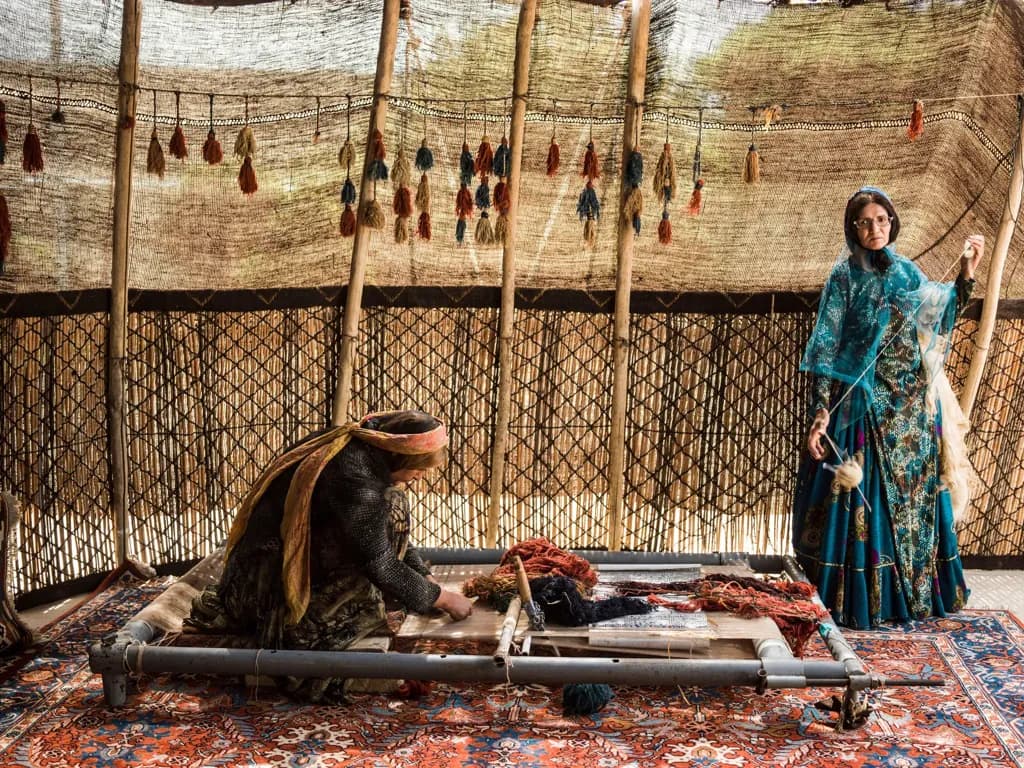Baluchestan rugs, crafted by the nomadic and semi-nomadic Baluch people across Iran's southeastern regions, represent one of the most authentic expressions of tribal weaving traditions. These distinctive carpets reflect the rich cultural heritage of a people known for their exceptional textile artistry and deep connection to traditional patterns and techniques.
Baluchestan rugs are immediately recognizable by their distinctive dark, rich color palette. Deep reds, midnight blues, and warm browns dominate, often enriched with touches of aubergine and deep green. This sophisticated use of darker tones is punctuated by small areas of ivory and orange, creating dramatic contrast that highlights the intricate geometric patterns.
The designs of Baluchestan carpets typically feature bold geometric patterns arranged in repeating motifs. Prayer rug formats are particularly common, featuring a mihrab (prayer niche) design filled with small geometric elements. Other characteristic patterns include repeated boteh motifs, stylized trees of life, and angular medallions. These designs often incorporate protective symbols and tribal identifiers that speak to the deep cultural significance of the weaving tradition.
The wool used in Baluchestan rugs is particularly noteworthy for its high lanolin content, sourced from local sheep breeds adapted to the region's harsh climate. This naturally oily wool creates carpets with a distinctive sheen and remarkable durability. The pile is typically cut low to medium height, allowing the geometric patterns to maintain their crisp definition.
Technically, these rugs are woven with a distinctive asymmetrical knot, creating a dense, durable fabric despite relatively moderate knot counts of 100-200 KPSI (knots per square inch). The foundation is typically wool, though cotton is sometimes used in more recent productions. The all-wool construction of traditional pieces contributes to their excellent durability and aging characteristics.
Sizes in Baluchestan rugs tend toward the smaller end of the spectrum, with prayer rugs and area rug sizes being most common. This reflects both the practical limitations of nomadic weaving and traditional use patterns. Larger pieces are relatively rare and particularly valued by collectors.
End finishes often feature distinctive kilim endings and occasionally include small tassels or fringe, adding to their authentic tribal character. These structural elements provide both decorative interest and additional stability to the piece.
The investment value of Baluchestan rugs has increased significantly as traditional nomadic weaving becomes increasingly rare. Their distinctive appearance, excellent durability, and authentic tribal character make them particularly attractive to collectors and enthusiasts of tribal rugs.
These carpets are especially valued for their ability to add depth and character to contemporary interiors. Their deep, rich colors and geometric patterns provide sophisticated accent pieces that work particularly well in modern design contexts, where their tribal authenticity creates compelling visual contrast.
Each Baluchestan rug represents generations of weaving tradition, where patterns and techniques have been preserved through centuries of nomadic life. These pieces continue to be prized for their combination of artistic excellence, structural integrity, and cultural authenticity, making them increasingly sought-after in both collector and decorator markets.
























